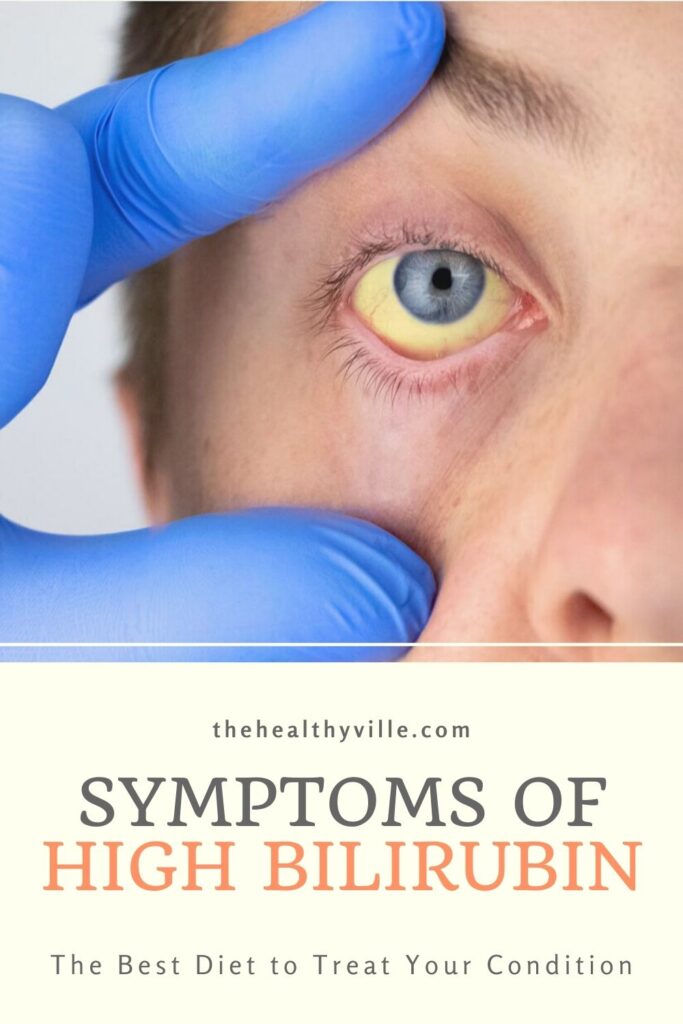The symptoms of high bilirubin can be relieved if you follow the proper diet. Check out which foods to eat and which to avoid to treat it.
Bilirubin is a yellow pigment that the body has on a regular basis. Under normal conditions it does not usually cause problems, but some diseases can cause it to accumulate in the blood.
Yellowing of the eyes, skin, or gums is not common, but can occur. This situation is jaundice and it is a clear sign that there is a problem in the functioning of the liver. A diet for treating symptoms of high bilirubin is helpful in these situations, always accompanying the appropriate treatment and directed by a specialist.
To optimize liver functions, it is advisable to adopt healthy eating guidelines based on fresh products, gentle cooking and easy digestion. In addition, it is important that it is abundant in vitamins, antioxidants, fiber and water. The following article details what is appropriate and what is best to avoid.
What is and what are the symptoms of high bilirubin?
Bilirubin is a yellow substance that appears as a result of the breakdown of red blood cells. But also as a consequence of enzymatic metabolism and myoglobin. Its characteristic tone is given by a pigment.
It circulates through the blood to the liver, which is responsible for excreting it from the body. Through the bile ducts it is expelled into the intestine and thus is evacuated with the feces. Normal values should be between 0.3 and 1.2 milliliters per deciliter of blood. When they exceed this range, hyperbilirubinemia appears.
Jaundice is the yellowing of the skin and mucous membranes and is one of the signs of the accumulation of bilirubin in the blood. It is not usually common, but it can appear in adults with liver diseases such as Gilbert’s syndrome, cirrhosis or hepatitis. Even in some babies at birth it is noticeable, since it may take a few days for the liver to be able to process this molecule.
Importance of diet to regulate bilirubin
The liver has a prominent role in digestion. Everything that is ingested is filtered by this organ that is responsible for converting nutrients into energy. It produces bile, which is necessary for the digestion of fats and, in addition, through it organic waste, alcohol, toxic substances and medicines are filtered.
Therefore, any food or drink that a person takes involves liver work. However, the different nutrients and chemicals present make this task easier or more complicated. So we can talk about products that are allies of the liver and others that are not so.
An excess of fats, salt and sugar and very large meals are difficult to digest, which requires a greater work of this organ. Therefore, it is not recommended and it is necessary to substitute it for all the foods that help in this function. This improves jaundice and prevents its reappearance.
Foods to reduce bilirubin levels
A diet for high bilirubin has to be balanced and adapted to the needs and specific situation of each person. But there are some foods with a more positive effect on the liver that can reduce symptoms and improve the situation.
Red fruits and vegetables
Antioxidants are an important component in maintaining oxidative balance in the liver. When this balance is disturbed, liver health is impaired and also its optimal functioning. For this reason, it is necessary to eat foods rich in these compounds.
The most abundant are in fruits and vegetables. The red ones should be highlighted, as they provide lycopene and this is one of the antioxidants that seems to have the most important activity in this regard. We can obtain it from the following foods that contain it in greater quantity:
- Tomatoes.
- Watermelon.
- Guava.
- Persimmons.
- Black grapes.
Fiber in the diet for high bilirubin
As pointed out by the American Liver Foundation, it is interesting to increase the presence of fiber, as it allows the liver to work at an optimal level. The most recommended sources are vegetables, whole grains and fruits in general.
Lean meat, white fish, and legumes
These are the most suitable sources of protein, as they are also the lowest in fat. Chicken, rabbit, and white fish varieties, as well as leaner cuts of meat are good in this situation. In addition, legumes in small portions also provide a lot of fiber in their composition.
Water as a drink of choice
It is important to get enough fluids to maintain good hydration and boost liver function. Another positive drink is coffee. Scientific evidence has shown that it can prevent the development of a liver problem and improve it when it has already appeared.
Until recently considered a bad habit, today the data on coffee consumption seems to go in the opposite direction. However, one must be prudent with its use and amounts, especially in those people who are sensitive to its effects or who do not take it regularly.
Foods to avoid on a liver diet
In addition to boosting all the positive foods in the diet for high bilirubin, there are a number of dietary tips on what is most harmful. According to the different experts agree, these are the ones that should be avoided as far as possible:
- Foods rich in fat: such as cream, aged cheeses, whole milk, cold cuts and non-lean meats. Also avoid fast food and cooking, such as fried foods.
- Skip alcohol: it causes additional damage to the liver, which is responsible for filtering it.
- Fish and seafood: raw or undercooked.
- Soft drinks, cakes, cookies and other foods high in added sugars: these can increase fat deposits in the liver.
- Hand rejects glass with alcohol.
- There’s never a recommendation for alcohol in liver conditions, as it worsens symptoms.
Top High Bilirubin Diet Ideas
People who, for whatever reason, have symptoms of high bilirubin, should follow a balanced and healthy diet adapted to their condition. It is important to eat 4 or 5 small meals a day, with all the nutrients present and with light and easily digestible cooking.
In addition to watching your diet and the foods that make it up, there are other habits or behaviors that can raise bilirubin levels in the blood. As noted by the British Liver Trust Foundation, jaundice becomes more apparent in the following situations:
- Fasting periods and low calorie diets.
- Times of stress.
- During infectious diseases.
- With vigorous sports practice.
If jaundice is accompanied by other symptoms, such as nausea, loss of appetite, lack of energy, or fluid retention, another high bilirubin diet may need to be followed. Or also adopt more specific guidelines that must be personalized.
Don’t forget to SHARE the diet ideas when exhibiting symptoms of high bilirubin with your friends and family on your social networks!

